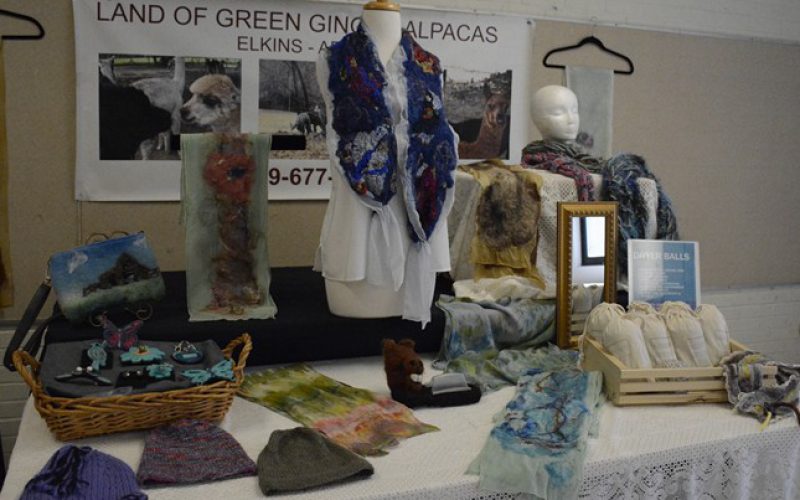Do you dream of having your own goat farm? Or having a duck pond and harvesting delicious eggs from your ducks? How about alpaca farming? It may seem quite unusual, but there are about 53,000 alpacas in the United States and many farms and breeders from Alaska to Florida.
For Jane Dula of Elkins, alpaca farming has been her passion for 12 years. Along with her husband Steve, they operate the Land of Green Ginger Alpacas and produce locally handmade clothing, felted scarves, knitted hats, purses, jewelry, pillows, and even dryer balls made of alpaca fiber that save 30 percent of drying time. With a farm of 25 alpacas on 40 acres, Jane is often busy taking care of these wonderful animals or producing new products for sale at the Fayetteville Farmer’s Markets or Ozark Natural Foods.
Jane met her first alpaca in a college honors program trip to Peru. In answer to the question of why she loves alpacas, she explains: “They’re so darn cute, with big beautiful seal eyes that look into your soul. Their movements are soothing, and they’re very curious animals. The babies are hilarious – they do something called pronking, which is bouncing with all four legs off the ground.” With good pasture, ten alpacas only require about one acre of land, and 64 animals can live on one square bale of hay per day, much less than horses.
Cows and horses tear or pull up the grass, but alpacas eat by cutting it with their teeth, and walk gently on the land because of their two-toed and padded feet. Because alpaca fiber doesn’t contain lanolin (and is therefore not water resistant, while it is hypoallergenic) no harsh soaps or chemicals are needed to remove it. These factors make alpaca farming a fairly sustainable endeavor. Jane’s process of eco printing, in which she creates the imprint of leaves and flowers using no dyes but simply the objects themselves, is another environmentally sound practice.
Alpacas are domesticated versions of the wild South American vicuñas, while llamas are domesticated from wild guanacos. Alpacas stand at about three feet at the shoulder, weighing 110 to 180 pounds. Gestation is about 11 and a half months, and give birth to just one offspring at a time. There are two breeds within the alpaca species, suri and huacaya (pronounced “wakaya”) and their fleece is different from one another in density and length, as well as purpose for various product needs. Suri fiber is better for scarves; like silk, it drapes naturally. Huacaya, on the other hand, is a thick wool which is better for hats and knitted items. In Peru, their fiber is considered to be so colorful that there are 52 different natural colors!
If you’d like to see some alpacas up close or learn how to spin alpaca fibers, the Land of Green Ginger Alpacas hosts tours and spinning lessons. Visit their website at www.AlpacaFiberWorks.com, or contact Jane Dula at (479) 677-2908.
Ripples is an emerging online educational center inspired by a holistic approach to making a difference. Follow our journey to live sustainably and make ripples with our lifestyle at: www.RipplesBlog.org.











